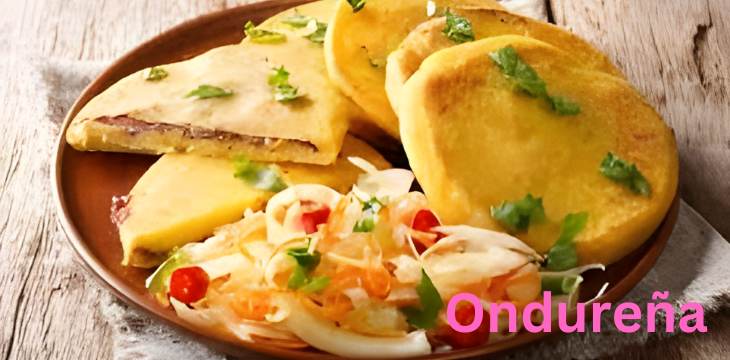Table Of Contents
Introduction
Ondureña cuisine, rooted in the rich cultural heritage of Honduras, offers a unique blend of indigenous, Spanish, African, and Caribbean influences. This culinary tradition reflects the diverse history and geography of the country, bringing together flavors and techniques that have been passed down through generations. This article explores the multifaceted nature of Honduran cuisine, delving into its types, common ingredients, popular dishes, and much more.
The Essence of Ondureña Cuisine
Historical Background
- Pre-Columbian Influences: Indigenous culinary traditions.
- Spanish Colonization: Introduction of new ingredients and cooking methods.
- African and Caribbean Impact: Enriching the flavor profiles.
Geographical Influence
- Regional Variations: Coastal vs. inland culinary practices.
- Climate and Agriculture: Impact on food production and availability.
Key Ingredients in Honduran Cuisine
Staples Ondureña
- Corn: Fundamental ingredient in many traditional dishes.
- Beans: A dietary staple, often served with rice.
- Rice: Integral to many meals.
Fresh Produce Ondureña
- Plantains: Used in various forms, both savory and sweet.
- Coconut: Essential in coastal dishes.
Proteins Ondureña
- Seafood: Abundant along the coasts.
- Pork and Chicken: Commonly used meats.
Popular Dishes Ondureña
Main Courses
- Baleadas: Thick flour tortillas filled with beans, cheese, and cream.
- Sopa de Caracol: Conch soup flavored with coconut milk.
Side Dishes and Snacks
- Tajadas: Fried plantain slices.
- Pastelitos de Carne: Meat-filled pastries.
Desserts Ondureña
- Tres Leches Cake: A rich, milk-soaked sponge cake.
- Arroz con Leche: Rice pudding.
Cultural Significance of Food
Festivals and Food
- Semana Santa: Special dishes prepared during Holy Week.
- Carnaval de La Ceiba: Celebratory foods.
Daily Life
- Family Meals: Importance of communal eating.
- Street Food Culture: Ubiquitous and varied.
Cooking Techniques and Methods
Traditional Methods
- Wood-fired Ovens: Used for baking and roasting.
- Comales: Griddles for cooking tortillas.
Modern Adaptations
- Electric Stoves and Ovens: Convenience in contemporary kitchens.
Health and Nutritional Aspects
Nutritional Profile Ondureña
- Balance of Macronutrients: Corn and beans provide protein and carbs.
- Micronutrients: Importance of fresh vegetables and fruits.
Dietary Considerations
- Vegetarian Options: Many dishes can be adapted.
- Allergen Awareness: Common allergens in traditional dishes.
Celebrating Ondureña Cuisine Worldwide
Global Influence
- Restaurants and Food Trucks: Bringing Honduran flavors to a global audience.
- Fusion Cuisine: Blending Honduran dishes with other culinary traditions.
Culinary Tourism
- Food Tours: Exploring local markets and eateries.
- Cooking Classes: Hands-on experiences for travelers.
Conclusion
Ondureña cuisine, with its rich history and vibrant flavors, offers a window into the country’s culture and traditions. By understanding and appreciating these culinary practices, we can celebrate the diversity and creativity of Honduran gastronomy.


